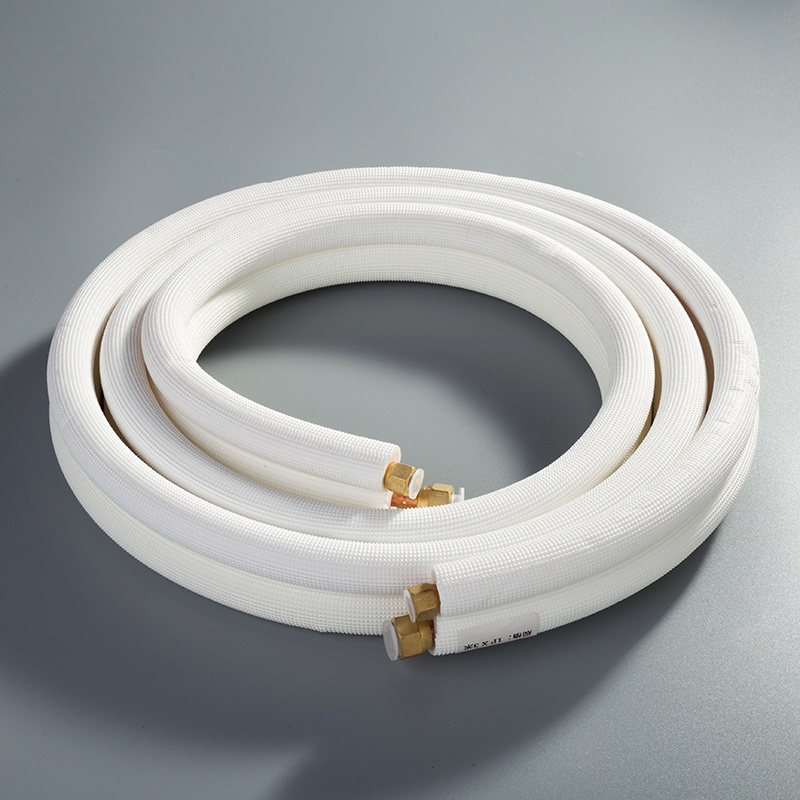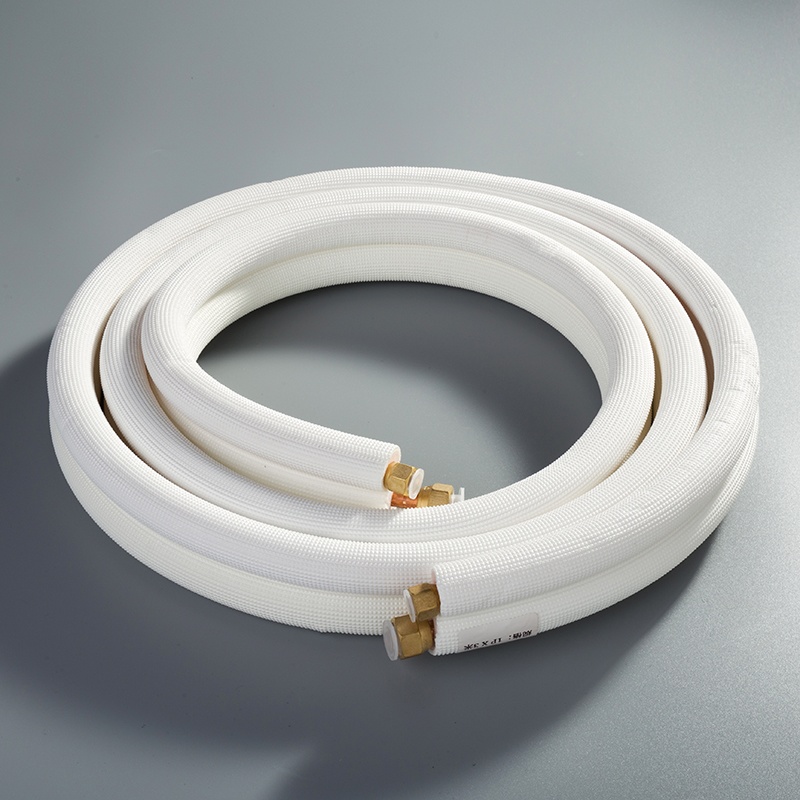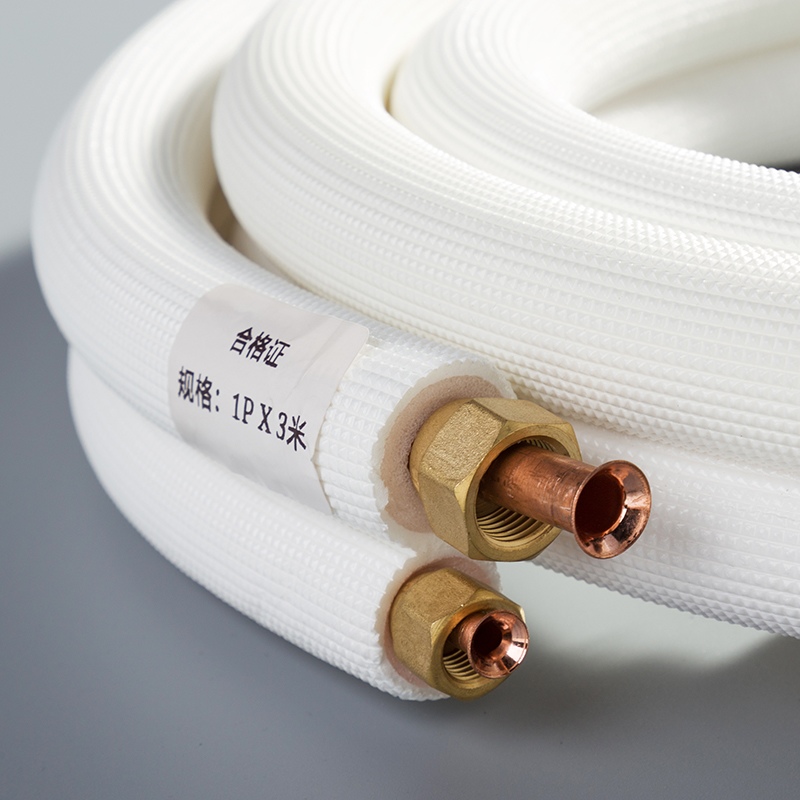Why Copper Pipes Are Crucial for Air Conditioning Systems

Copper pipes play a vital role in air conditioning systems, ensuring efficient and reliable performance. Their exceptional thermal conductivity, nearly 60 times greater than stainless steel, allows for rapid heat transfer, which is crucial for maintaining consistent cooling. You can rely on copper's durability to withstand high pressures and temperature variations, ensuring long-term reliability. Additionally, its resistance to corrosion makes it a cost-effective choice, reducing the need for frequent replacements. While the cost of air conditioner copper pipe may seem higher initially, its longevity and efficiency make it a smart investment for any HVAC system.
Key Takeaways
Copper pipes help cool faster because they transfer heat well.
They are strong and handle high pressure and heat changes.
Copper resists rust, so it lasts longer and leaks less.
Adding insulation keeps temperatures steady and saves energy costs.
Copper pipes work with new refrigerants and are eco-friendly.
Thermal Conductivity of Copper Pipes

Enhancing Cooling Efficiency
Copper pipes play a pivotal role in improving the cooling efficiency of air conditioning systems. Their exceptional thermal conductivity, ranging from 389 to 401 W/m·K, far surpasses materials like aluminum, which only offers 205 to 237 W/m·K. This makes copper an excellent conductor of heat, allowing it to transfer thermal energy rapidly and efficiently. You benefit from this superior heat transfer property as it ensures your air conditioning system cools your space faster and more effectively.
Tip: Choosing copper refrigerant lines for your HVAC system can significantly enhance its cooling performance while reducing energy consumption.
Additionally, copper refrigerant lines are designed to handle the demands of modern air conditioning systems. Their ability to resist corrosion and maintain structural integrity over time ensures reliable performance. By using copper piping, you can enjoy a system that not only cools efficiently but also lasts longer with minimal maintenance.
Consistent Temperature Regulation
Maintaining consistent temperatures is crucial for the optimal performance of your air conditioning system. Copper refrigerant lines excel in this area due to their low specific heat, which allows them to release heat quickly and cool down rapidly. This unique property ensures that your system can regulate temperatures effectively, providing a stable and comfortable indoor environment.
Insulation further enhances the performance of copper piping. It stabilizes temperatures within the pipes, preventing condensation and corrosion. For cold water systems, copper refrigerant lines prevent warming, ensuring consistent cooling. In hot water systems, they maintain the desired temperature without fluctuations.
Insulation prevents condensation, reducing the risk of water damage.
It maintains refrigerant temperatures, ensuring your HVAC system operates at peak efficiency.
By minimizing heat exchange, copper refrigerant lines improve energy efficiency and lower utility costs.
With copper pipes, you can trust your air conditioning system to deliver consistent and reliable performance, no matter the conditions.
Durability and Longevity of Copper Piping

Resistance to Pressure and Temperature Variations
Copper pipes are built to handle the demanding conditions of air conditioning systems. They can withstand high pressures and extreme temperature fluctuations without losing their structural integrity. This makes them an excellent choice for environments where HVAC systems operate continuously.
Unlike alternative materials, copper piping resists deformation under stress. It maintains its shape and functionality even when exposed to sudden temperature changes. This durability ensures that your air conditioning system remains reliable, reducing the risk of leaks or failures.
The operational lifespan of copper pipes far exceeds many other materials used in HVAC systems. Here’s a comparison of the average lifespan of different pipe materials:
Pipe Material | Lifespan (Years) | Notes |
|---|---|---|
Copper | Over 50 | Durable and corrosion-resistant; popular choice for plumbing systems. |
Galvanized Steel | 20 to 50 | Coated for corrosion resistance; longevity affected by water quality. |
PVC | 50 to 100 | Resistant to corrosion; popular for various applications. |
CPVC | 50+ | Similar durability to PVC; does not rust or corrode. |
By choosing copper piping, you ensure a long-lasting and dependable solution for your HVAC system.
Corrosion Resistance for Extended Lifespan
Copper pipes excel in resisting corrosion, which significantly extends their operational lifespan. One of copper's unique properties is its ability to form a protective oxide layer. This layer slows down the corrosion process, ensuring the pipes remain functional for decades.
If the oxide layer gets damaged, copper has self-healing properties. It naturally forms a new layer of copper oxide, maintaining its resistance to corrosion. This feature makes copper suitable for various environments, including urban, industrial, and marine settings.
Copper forms a protective oxide layer that reduces corrosion.
It self-heals by creating a new oxide layer if damaged.
It performs well in diverse environments, enhancing its durability and longevity.
These corrosion-resistant properties make copper pipes a reliable choice for air conditioning systems. They minimize the need for frequent replacements, saving you time and money in the long run.
Compatibility of Copper Refrigerant Lines with Modern Systems
Seamless Integration with Refrigerants
Copper refrigerant lines are essential for ensuring your air conditioning system operates efficiently with modern refrigerants. Their compatibility with a wide range of refrigerants makes them a versatile choice for various HVAC setups. Whether your system uses traditional refrigerants or newer, eco-friendly options, copper refrigerant lines adapt seamlessly. This flexibility helps you meet environmental regulations and achieve energy efficiency standards.
Did you know? Copper has been the standard material in air conditioning systems for decades due to its high-quality performance and adaptability.
The ductility of copper allows it to be shaped on-site to fit different design configurations. This feature enhances its versatility, making it suitable for both residential and commercial HVAC systems. Additionally, copper refrigerant lines resist corrosion, ensuring long-term reliability and reducing the need for frequent replacements. By choosing copper, you ensure your system integrates smoothly with refrigerants while maintaining durability and efficiency.
Future-Proofing HVAC Systems
The importance of copper refrigerant lines extends beyond current needs. They also prepare your air conditioning system for future advancements in HVAC technology. Copper pipes are compatible with modern refrigerants, including non-toxic hydrocarbon options, which promote sustainability. Their resistance to corrosion ensures they remain reliable even as HVAC systems evolve.
Copper refrigerant lines also support innovations like smart technology. For example, they integrate with systems that offer real-time tracking and leak detection, helping you maintain optimal performance. Small-diameter copper pipes reduce refrigerant usage, lowering material costs and improving energy efficiency. These features make copper refrigerant lines a forward-thinking choice for your HVAC system.
By investing in copper refrigerant lines, you future-proof your air conditioning system. You gain a durable, efficient, and sustainable solution that adapts to changing technologies and environmental standards.
Ease of Installation and Maintenance of Copper Pipes
Flexibility and Workability
Copper pipes stand out for their flexibility and ease of installation. You can bend and shape them to fit various HVAC system designs without compromising their structural integrity. This adaptability makes copper piping an excellent choice for both residential and commercial air conditioning systems. Unlike rigid materials like PVC, copper allows for seamless adjustments during installation, reducing the need for additional fittings or connectors.
The manufacturing process enhances copper's workability. Annealing, for instance, improves the ductility of copper pipes, allowing them to withstand bending without cracking. This property simplifies installation, especially in tight spaces or complex layouts. Additionally, copper's lightweight nature makes it easier to handle, reducing labor costs and installation time.
Routine maintenance of copper piping is straightforward. Regular inspections help you identify potential issues, such as damaged insulation or minor wear. To maintain efficiency:
Inspect insulation for gaps or tears.
Replace or repair damaged insulation promptly.
Ensure proper sealing at joints to prevent energy loss.
These practices ensure your air conditioning system operates efficiently while extending the lifespan of the copper pipes.
Leak-Free and Reliable Connections
Copper pipes provide unmatched reliability when it comes to leak-free connections. Their unique properties, such as thermal conductivity and corrosion resistance, ensure that connections remain secure even under temperature fluctuations. For example, copper expands and contracts uniformly, maintaining the integrity of joints and fittings.
The methods used to join copper pipes further enhance their reliability. Techniques like soldering and brazing create strong, durable bonds that resist leaks. Compression fittings also apply even pressure around the pipe, ensuring a tight seal.
Property | Explanation |
|---|---|
Thermal Conductivity | Copper expands and contracts similarly to copper pipes, maintaining connection integrity under temperature changes. |
Corrosion Resistance | High resistance to corrosion ensures longevity and reliability, preventing leaks from deteriorating fittings. |
Tight Sealing | Compression fittings apply even pressure around the pipe, minimizing the potential for leaks at joints. |
Compatibility | Precisely engineered dimensions create snug fits, reducing gaps that could lead to leaks. |
Methods of Joining | Techniques like soldering and brazing create strong, leak-free bonds between fittings and pipes. |
By choosing copper piping, you gain a system that not only installs easily but also requires minimal maintenance. Its durability and reliable connections make it a trusted choice for air conditioning systems, ensuring long-term performance and efficiency.
Energy Efficiency and Sustainability in Air Conditioning Systems
Minimizing Energy Loss
Copper pipes play a critical role in reducing energy loss in air conditioning systems. Their smooth inner surface minimizes friction, allowing refrigerants to flow efficiently through refrigeration circuits. This smooth flow reduces resistance, ensuring your cooling systems operate at peak performance. Insulating copper pipes further enhances energy efficiency by preventing heat loss and maintaining temperature stability.
Insulated copper pipes reduce heat transfer to the surrounding environment.
They stabilize refrigerant temperatures, improving the overall efficiency of refrigeration circuits.
Proper insulation can save up to 10-20% annually on energy bills in commercial buildings.
Small-diameter copper tubes also contribute to energy savings. Their increased surface area contact with refrigerants improves heat transfer efficiency, reducing the refrigerant charge and overall system size. This design not only lowers material costs but also supports energy-efficient HVAC systems by minimizing energy waste.
By using copper pipes, you can significantly reduce energy loss, lower utility bills, and enhance the performance of your air conditioning system.
Supporting Green and Sustainable HVAC Solutions
Copper pipes support environmentally friendly HVAC solutions in several ways. Their exceptional thermal conductivity enhances energy efficiency, reducing the strain on cooling systems. This efficiency aligns with sustainability goals by lowering energy consumption and greenhouse gas emissions.
Copper facilitates the use of low global warming potential refrigerants, promoting eco-friendly practices.
Small-diameter copper tubes are durable and compatible with high-pressure refrigerants, ensuring long-term sustainability.
Advanced control systems paired with copper components optimize energy use, reducing environmental impact.
Additionally, copper's durability and compatibility with electric heating systems make it an ideal choice for transitioning to electrified HVAC applications. Its ability to integrate with sustainable refrigerants and innovative technologies ensures that your air conditioning system remains both efficient and environmentally conscious.
By choosing copper pipes, you contribute to a greener future while enjoying the benefits of energy-efficient HVAC systems.
Copper pipes are the backbone of reliable air conditioning systems. Their superior thermal conductivity ensures optimal efficiency, while their durability minimizes maintenance needs. Copper's corrosion resistance prevents refrigerant line leaks, maintaining system integrity over time. Insulation reduces temperature fluctuations, extending the lifespan of copper tubes in HVAC systems. These features make copper a cost-effective choice, offering long-term performance and energy savings. By choosing copper, you ensure your HVAC systems operate efficiently, sustainably, and reliably, meeting both current and future demands.
FAQ
What makes copper pipes better than other materials for HVAC systems?
Copper pipes excel due to their high thermal conductivity, durability, and corrosion resistance. These qualities ensure efficient cooling, long-lasting performance, and minimal maintenance. Unlike other materials, copper integrates seamlessly with modern refrigerants, making it the ideal choice for HVAC systems in both residential and commercial settings.
How do copper pipes improve HVAC energy efficiency?
Copper pipes reduce energy loss by providing smooth refrigerant flow and excellent heat transfer. Their compatibility with insulation prevents temperature fluctuations, ensuring stable operation. Small-diameter copper tubes further enhance efficiency by reducing refrigerant usage, which lowers energy consumption and supports sustainable HVAC solutions.
Are copper pipes easy to install in HVAC systems?
Yes, copper pipes are highly flexible and lightweight, making installation straightforward. You can bend and shape them to fit various HVAC designs without compromising their integrity. Techniques like soldering and brazing create strong, leak-free connections, ensuring reliable performance with minimal installation challenges.
Can copper pipes handle modern refrigerants in HVAC systems?
Copper pipes are compatible with a wide range of refrigerants, including eco-friendly options. Their durability and resistance to corrosion make them suitable for high-pressure refrigerants used in modern HVAC systems. This adaptability ensures your system remains efficient and compliant with environmental standards.
How do copper pipes contribute to sustainable HVAC practices?
Copper pipes support sustainability by enhancing energy efficiency and reducing greenhouse gas emissions. Their durability minimizes waste from frequent replacements. Additionally, they work well with low global warming potential refrigerants, helping you transition to greener HVAC technologies while maintaining reliable performance.
See Also
The Benefits Of Using Copper Pipes In Air Conditioning
Pure Copper Pipes: Essential For Optimal Air Conditioning Efficiency
Key Advantages Of Copper Pipes In Air Conditioning Systems
The Impact Of Pure Copper Pipes On Air Conditioning
Explore Five Reasons Pure Copper Pipes Enhance Air Conditioning


